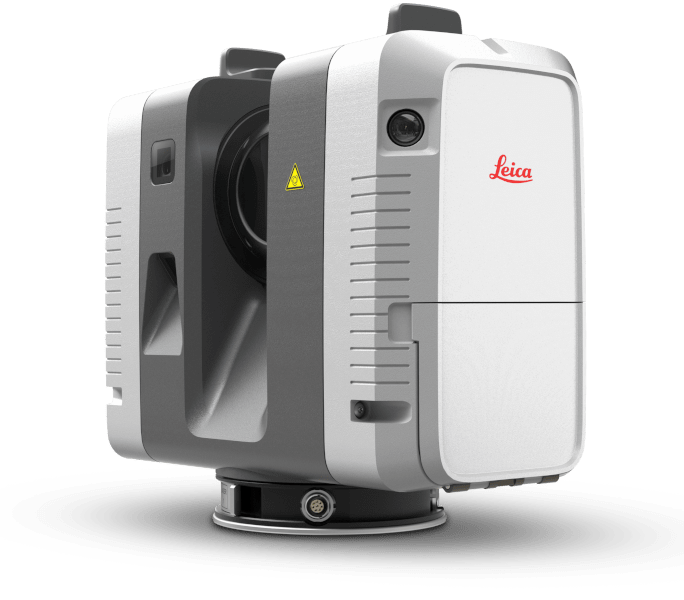3D scanning

3D scanning is the process of acquiring digital data about a physical object using laser scanners, photogrammetry, or other technologies. This process is used to create an accurate digital copy of an object, which can then be used for various purposes, such as research or the production of replicas. 3D scanning is often used in industries such as architecture, industry or healthcare.
There are many technologies for 3D scanning, including laser scanners, structured light, kinetic sensors and photogrammetry. Each of these technologies has its own benefits and limitations, so it is important to consider your specific needs and goals in order to select the most appropriate technology for the project. For example, laser scanners are suitable for accurate measurements but may be limited when scanning large or complicated objects. Structured light, on the other hand, allows large areas to be scanned quickly but may be less accurate than laser scanners.
We use a variety of 3D scanners, all of which are completely non-contact and safe for scanned objects, animals and people.
Our main focus
- Scanning film props and environments for filming for use for matchmoving and / or scene enhancement
- Digitization of cultural heritage, monuments, sculptures, works of art of all sizes – from coins to building complexes
- Scanning museum exhibits, archaeological sites
- Documentation of reconstruction and restoration work (comparison of actual state before and after)
- Scanning of industrial buildings and facilities
- Scanning objects for use in advertising
- Possibility to scan people or animals in the biggest 3D scanner in continental Europe
Types of scans
Technology and equipment
- laser scanners
- Leica RTC 360
- Faro Focus X330
- ZEISS T-SCAN Hawk
- Konica Minolta Vivid 910
- photogrammetry
- Sony A7R
Who we scan for
- 3D animation
- Architecture and Construction
- Automotive
- Film, Advertising, VFX
- Cultural Heritage
- Aerospace
- Museums
- Industrial Design
- Marketing
- Engineering
- Forensics
- Structural Engineering
- Art and Sculpture
- Virtual Reality (VR)
- Computer games development
- Research and development
- Education
- Healthcare
Where we scan

Thanks to our location in Prague, we are very flexible. Scanning anywhere in the Czech Republic is a sure thing, but we are not limited to scanning within the Czech Republic. We are able to respond to your requirements throughout Europe in a few days, depending on current workload. Our 3D scanning kit is fully portable and we are able to travel all around the world. Technically, we are able to scan anywhere in the world, but some places outside the EU might have specific legal restrictions.
What is difficult to scan
It’s good to know where the current limits of 3D scanning lie. We are able to solve most of our problems during scanning or post-processing of scans, but we would like to inform you about the conditions that will deliver the best results.
- Generally, the results are best when there is a complex shape with irregular features. When the object is smooth, single color and glossy, getting optimal results can be difficult.
- Optically uncooperative materials, especially transparent or shiny objects, are the most difficult to scan in its original state. For these objects is necessary to use special antiglare spray or cover the objects with adhesive tape.
- Scanning in the presence of occlusions and self-occlusion may lead to holes in scanned data.
- Thin, delicate elements are very difficult to scan. Hair, feathers, or other very thin parts of the scanned object may cause problems.
- Deep holes, i.e. a vase, will be optimal to scan on the outside, but the wall thickness will be generated in the software afterward.
- Moving objects (including humans) are possible to scan only in the studio with fixed scanning rig, where multiple cameras are triggered at once. Moving objects are not scannable with laser scanning.
- Vegetation and unwanted moving objects around a scanned object (typically humans, cars, birds, etc.) can cause problems for two main reasons: they can hide the scanned object, and moving objects additionally look different on each scan, resulting in inconsistencies in aligning of individual scans into each other. For these reasons, it is ideal if the surroundings of the scanned object are closed to the public and devoid of vegetation.
Price
Unfortunately, with 3D scanning, the price cannot be determined at a flat rate, as it is strongly dependent on what is being scanned, what accuracy and resolution the scans are supposed to be, what technology is used, etc. We therefore determine the price individually for each order based on your demand. To get a price offer, please contact us by e-mail, telephone or via the contact form.




